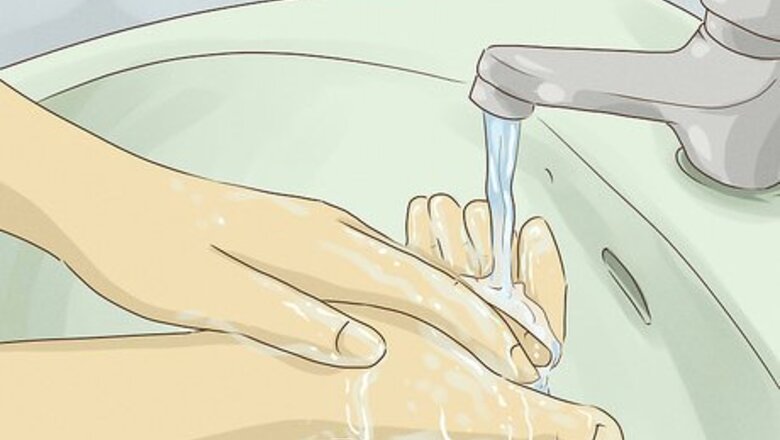
views
X
Trustworthy Source
Cleveland Clinic
Educational website from one of the world's leading hospitals
Go to source
Self-Injecting Depo-SubQ Provera 104

Wash your hands. It is important to wash your hands to reduce your likelihood of getting an infection. Wash thoroughly by: Holding your hands under a flowing tap of clean water. The water can be warm or cold, whichever is more comfortable for you. Scrub your hands together with soap for approximately 20 seconds. Remember to clean under your fingernails and between your fingers. Rinse your hands thoroughly under clean water. Dry your hands with a clean towel.
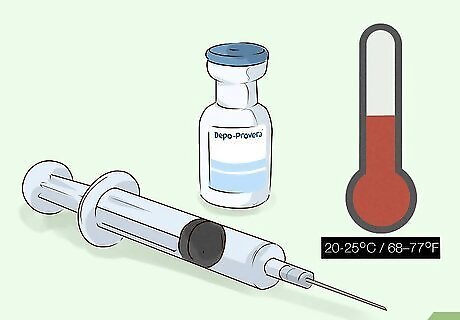
Prepare the injection. The injection must be given subcutaneously, as instructed by your doctor or the instructions in the packaging. Depo-SubQ Provera 104 should not be given intramuscularly. Prepare the injection by: Checking to make sure it is at room temperature (20–25 degrees Celsius or 68–77 degrees Fahrenheit). This is important to make sure that the mixture has the right viscosity. The shots should be stored and maintained at room temperature. This means that they will be at the correct temperature when you are ready to inject them. Verifying that you have all the necessary materials, including the prefilled syringe and the 3/8 inch needle with the safety shield. Inspecting the materials to make sure they are sealed and have no discoloration or leakage.
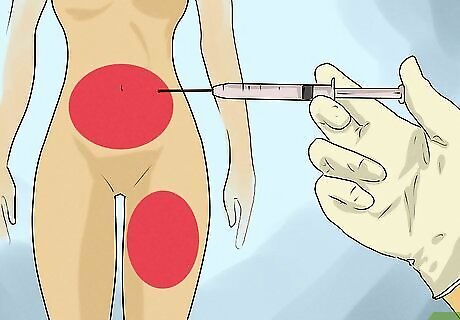
Choose an injection site. The best locations for the injection are the upper thigh or the abdomen. Which one you choose depends on your personal preferences. Clean the area by: Wiping the skin with an alcohol pad. This will disinfect the area and reduce your chances of getting an infection. Allow the site to air dry. Do not pat it dry with a towel or tissue. Doing so will contaminate it.
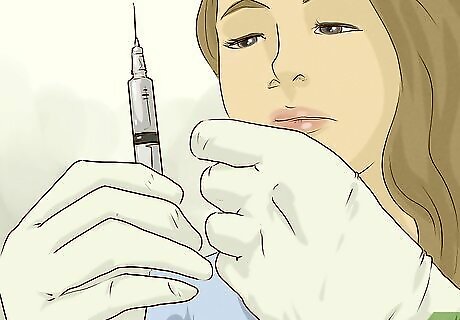
Get the syringe ready. This involves shaking the syringe to make sure the contents of the injection are well mixed and then putting the needle on the syringe. Hold the syringe so that the place where the needle attaches faces up. Shake the syringe hard for 60 seconds. Remove the syringe and needle from the packaging. Take the protective cap off of the syringe and put the needle on by pressing the needle cover down onto the syringe with a small twist. Lift the safety shield away from the needle and pull it back towards the syringe. It should be at a 45–90 degree angle from the needle. Take the needle cover off the needle by pulling straight. Do not twist. Remove air bubbles by holding the syringe with the needle facing up and gently pressing the plunger until the medication is at the top of the syringe.
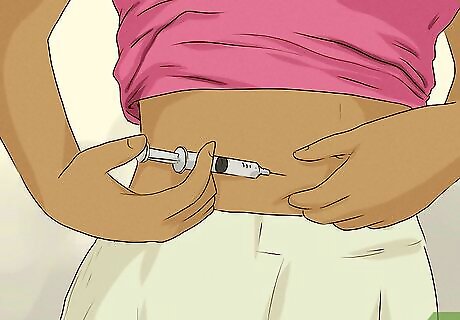
Inject the complete dose. The medication should be injected into the fatty layer right below your skin. It is important that you get the complete dose. Otherwise, it may be less effective. Pinch a thick layer of skin between your thumb and forefinger. The roll will probably be about an inch thick. Put the needle in at a 45 degree angle to your skin, inserting it between your thumb and forefinger. When you have it fully inserted, the plastic hub on the needle will be close to your skin. Slowly press the plunger until the syringe is empty. This should take about five to seven seconds. Snap the safety shield on the needle back into position. Press firmly against the injection site with a clean cotton ball. Do not rub the injection site.
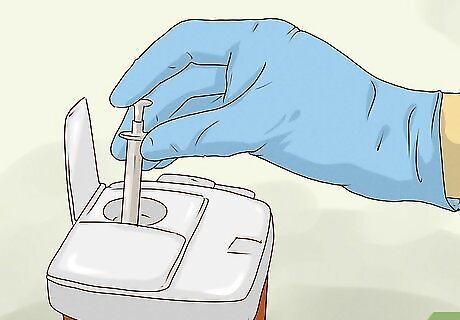
Dispose of the needle and syringe in a safe way. Follow your doctor’s orders, the manufacturer’s instructions, and all state and local laws on how to dispose of the needle safely. You may be instructed to dispose of the needle in an approved, hard-sided, puncture-proof biohazard container. If you are unsure what is appropriate, call your doctor or local pharmacist for advice. It is important that children and pets cannot access the used needle, and that no one else will accidentally stick themselves with the needle.
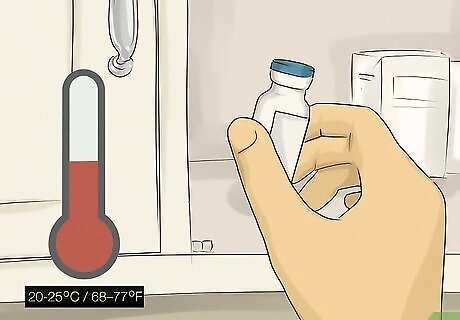
Store any remaining shots at room temperature. Do not refrigerate them. They should be maintained at: 20–25 degrees Celsius or 68–77 degrees Fahrenheit. Follow any other storage instructions provided by your doctor or on the packaging provided by the manufacturer.
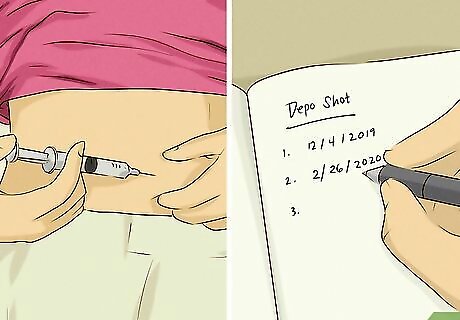
Make a note of when to take give yourself the next shot. The shots must be given every 13 weeks. If you go longer than that, contact your doctor to get a pregnancy test and discuss using a backup method. Tricks to help you remember to give yourself the next shot include: Entering it into your calendar Programming a reminder into your cell phone Asking your partner to remind you
Receiving Depo-Provera Intramuscular Formulation

Make an appointment with your doctor. The Depo-Provera intramuscular shot must be given by a doctor or nurse. You can obtain this form of birth control from: A private healthcare provider A gynecologist’s office A Planned Parenthood health center
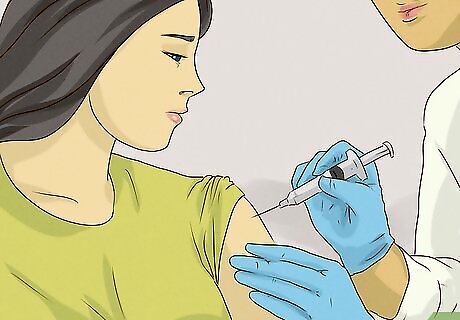
Watch as your healthcare provider injects the medication. The doctor or nurse will first shake the medication to make sure the particles are properly suspended in the mixture and disinfect your skin with an alcohol wipe. This medication must be given as a deep intramuscular injection. Don’t rub the site after you receive the injection. There are two locations that the doctor might choose: The deltoid muscle of your arm The gluteal muscle of your buttock
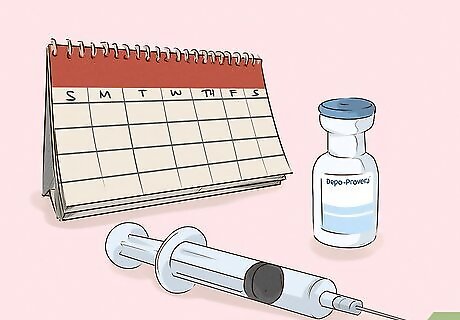
Make an appointment for the next dose. The injections must be given on schedule every three months to prevent pregnancy. As you leave the doctor’s office, ask for an appointment in 13 weeks for your next injection. If you are late in receiving the next injection, you will need to use a backup birth control method to prevent pregnancy. Your healthcare provider may also require you to take a pregnancy test before giving you the next injection. You can’t receive the injection if you could be pregnant because Depo-Provera can cause birth defects.
Evaluating Whether Depo-Provera is Right For You
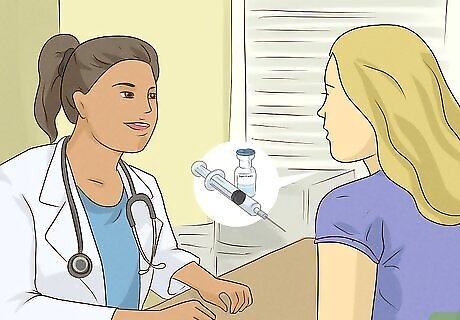
Ask your doctor whether Depo-Provera is an option for you. Not all women can take it. Your doctor will likely advise against it if: You could be pregnant You have breast cancer You have fragile bones and are prone to breaking them You are taking aminoglutethimide for Cushing’s syndrome
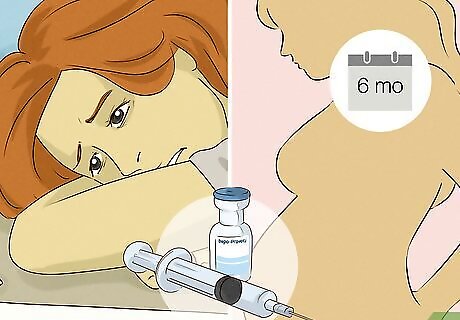
Weigh the advantages and disadvantages. The benefits include that, when used correctly, it is over 99% effective and it doesn’t require you to remember to take a pill each day. Disadvantages include: Side effects which can’t be stopped until the shot wears off. This may include: irregular bleeding, temporary thinning of your bones, a change in sex drive, weight gain, depression, hair loss, increased hair on the face or body, headaches, nausea, or breasts that are tender. The shot does not protect against sexually transmitted diseases like HIV/AIDS. It may take six to 10 months for you to get pregnant, even after the shot wears off. If you are thinking of getting pregnant sometime soon, the shot may not be a good method for you.
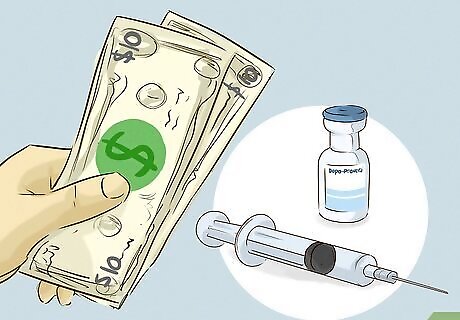
Estimate the costs. Many Planned Parenthood centers charge according to income. If you are worried about the costs, ask about an income-based sliding scale. Potential costs may include: $0-$100 per injection $0-$250 if you need an initial gynecological exam $0-$20 if you need a pregnancy test before the injection


















Comments
0 comment